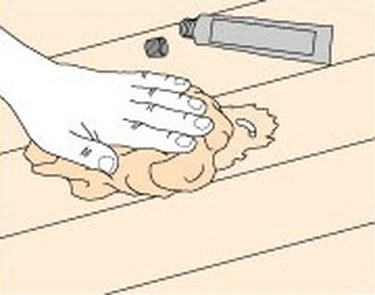Quck answer
Water damage can cause significant harm to hardwood floors, but repairs can be made to restore their original condition. First, remove any standing water and dry the area thoroughly. Use fans and dehumidifiers to speed up the drying process. Next, assess the extent of the damage. If only the surface is affected, sanding and refinishing may be enough. For deeper damage, individual planks may need to be replaced. Lastly, apply a wood floor sealer and finish to protect the repaired area. Regular maintenance, such as avoiding excessive water exposure and promptly cleaning up spills, can help prevent future damage.
Wood and water don’t go well together. Sealed and waxed floors can get stained if water remains on them for more than a few minutes. Here’s a guide on how to repair the damage.
Step 1

To remove a smoky white haze or a white spot, gently rub the finish with a soft cotton cloth and a mild abrasive, such as whitening toothpaste, auto-polishing compound, or a mixture of tobacco ash and mineral oil, until the stain disappears (see A).
Step 2
Use painter’s masking tape to cover the surrounding boards.
Step 3

Start by removing any wax or surface finish. Use fine steel wool to remove wax, and sandpaper to remove a surface finish. Depending on the size of the damaged area, you can hand-sand with a rubber sanding block (see B) or use a random-orbit sander. Begin with 80- or even 60-grit abrasive and gradually progress to 100-grit. Stop sanding just at the edges of the unaffected boards.
Step 4
Dissolve oxalic acid crystals (available at paint or hardware stores) in about 1 cup (8 fl oz/250 ml) of hot water. Keep adding crystals until they no longer dissolve.
Step 5
Apply the solution to the stained area using a brush, sponge, or by pouring it. Once it is completely dry, brush off the crystals and repeat the process until the stain is gone.
Step 6
Stain or seal, and then refinish the affected area (see How to Replace a Wood Floorboard). Alternatively, if the touch-up stands out too much, you can use the screen-and-overcoat method to restore the entire floor (see How to Restore a Dull, Worn Wood Floor).


